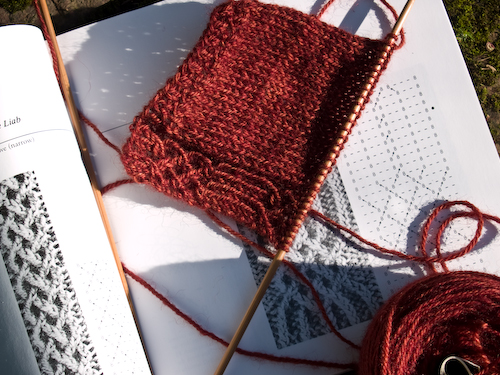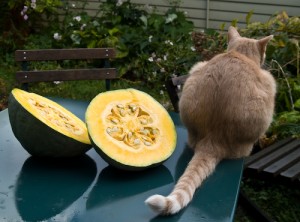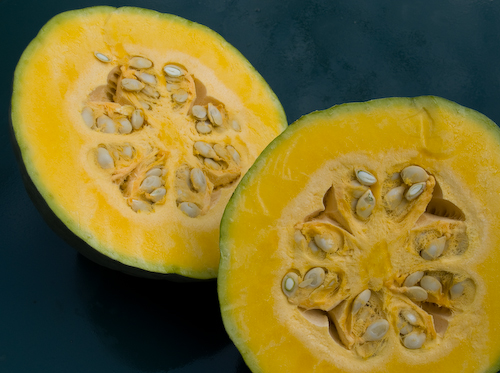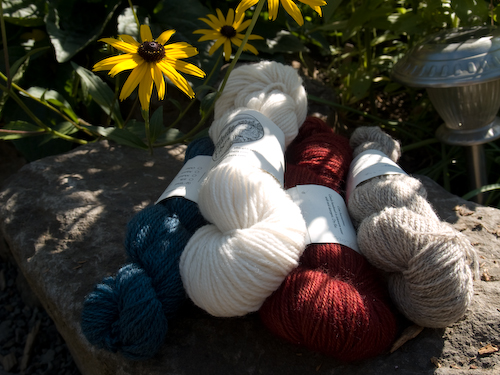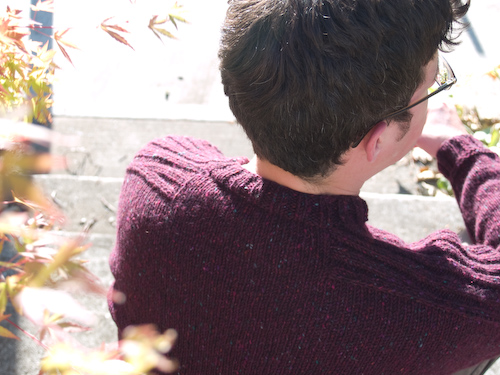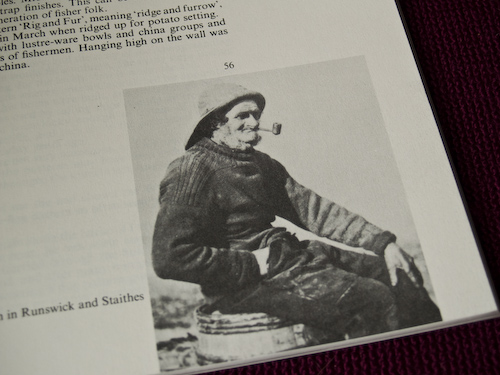Of squash and twisted stitches
As I scheme and sketch towards this big design project I’ve mentioned, I’m thinking about favorite knitting techniques and visual effects I’d like to incorporate. There will be colorwork and cables, of course (possibly together!); a more recent addition to my toolbox is the twisted stitch knitting that originated in the Styrian Enns Valley. I’ve played with small twisted-stitch motifs before, most notably in the Twisted Tree pullover I designed for my dear friend’s nephew. (Leif has just become a big brother! Abbie will have to let me know if she thinks baby Maren needs a special design of her own.) Now I’m delighted to have added Schoolhouse Press’s new translation of Maria Erlbacher’s Twisted-Stitch Knitting, the seminal work on this particular tradition, to my library. I swoon for the beautiful stockings in particular. Alas, my calves are rather too scrawny to merit a special increase panel with beautiful twisting knotwork, but if I could ever convince my husband to wear a kilt (even a Utilikilt!), I do think some glorious twisted-stitch stockings would be in order.
Twisted stitches were the first thing I wanted to swatch with my 3-ply from Island Fibers. This yarn begs to be given some intricate stitchery, and it wants a fairly tight gauge or it tends to go sprawling all over the place. I knew this from having seen a swatch in plain rib at the Island Fibers studio, but I suspected that if those ribbed stitches were twisted they’d leap forward and command a three-dimensional space. Here’s my first little play-swatch.
The effect of those beautiful tight braids all over a garment is stunning, but I’m playing with the idea of using them minimally to achieve a quiet, elegant effect that owes as much to Japanese influences as to Austria. Stay tuned to see what comes of my experiments.
Yarn and stitchwork haven’t been the only domains in which I’ve been experimenting. We’re entering one of my favorite culinary seasons (okay, each one is my favorite when new seasonal delicacies become available). When the rains and chilling damp decend, I always want the cozy foods: velvety risottos, colorful roasted vegetables spiked with rosemary and thyme, steaming cornbread, and curried soups. Butternut squash and apple soup is a long-time favorite, and I’m ashamed to say butternuts were the only squash I liked for many years. They were certainly the best of what used to be available in the grocery store; acorns and spaghetti squash are the only other winter squashes I remember encountering in childhood, and I found them unpleasantly stringy, watery, pasty, or some combination of those attributes. In more recent years I’ve been drawn to the arresting display of varieties in the farmers’ markets—gorgeous red-orange or ghostly blue orbs; zebra-striped oblongs; deep green spinning-tops. But I let my ignorance of what on earth you’d DO with such a big, beautiful squash once you got it home stop me from trying them.
Last year’s winter CSA share changed my attitude, thank goodness. I discovered delicata: what could be easier than to lop this tender squash in half and bake it with butter, drizzle it with a little maple syrup and spoon it right out of the shell? It’s like butternut, but even sweeter. And the real challenge came one day in March when my share included a Chioggia heirloom. It must have weighed twenty pounds. My biggest knife was no match for its tough hide. A machete might possibly have made a dent; a table saw really would have been the carving implement of choice. I went to my cook books for advice. Fortunately, Farmer John told me I could stick the whole monster into the oven and wait for the heat to soften it into submission. I did, and then I sliced up segments to roast further. It was several hours before I had the entire squash roasted and spooned into plastic containers for freezing, but there was a break in the labor while we went next door to tuck some of it into pouches of homemade pasta for a ravioli dinner with the neighbors.
This past week I took out a container of frozen Chioggia squash and thawed it in a pot on the stove while I sauteed an array of peppers, the kernels from two ears of corn grown in the school gardens, and some frozen cubes of roasted garlic (my mother-in-law buys these for us and I’ve been letting them languish because we always have fresh garlic, but they’re very handy in soups) with paprika. I added the squash and some vegetable broth, and later some salt and pepper. The result was a thick, sweet, spicy soup, better yet with a dollop of sour cream stirred in and garnished with fresh parsley. The corn was a late-season survivor, very starchy and chewy. I don’t know whether it would have been good eating right off the cob, but in the soup, as my husband commented, it was almost like a chewy grain. We had the leftovers with roasted brussels sprouts from the farmers’ market last night.
So now that I’m not afraid of giant squash anymore, I went out and bought some more:
These are from Kruger Farm on Sauvie Island, just north of Portland. Their bins weren’t marked, but the one on the left is a Blue Hubbard and I think the one on the right might be a Rouge Vif d’Étampes. The Blue Hubbard is about the size of the hinder end of a large cat:
I loved this squash. I was able to cut it without pre-baking; it yielded up its seeds and pith with ease; and once I’d roasted the halves it produced a big pot of curried soup, a pie (yes, a pumpkin pie made with squash—you really can’t tell the difference), and the delicious love child of a pumpkin pie and a cheesecake. (Also thanks to a Farmer John recipe. This last went to school, where it was gobbled up by my colleagues.)
I highly recommend you try a giant squash of your own this autumn if you haven’t already. My husband didn’t think he liked squash and now he’s the first to dig in the freezer for the makings of another pot of soup.


